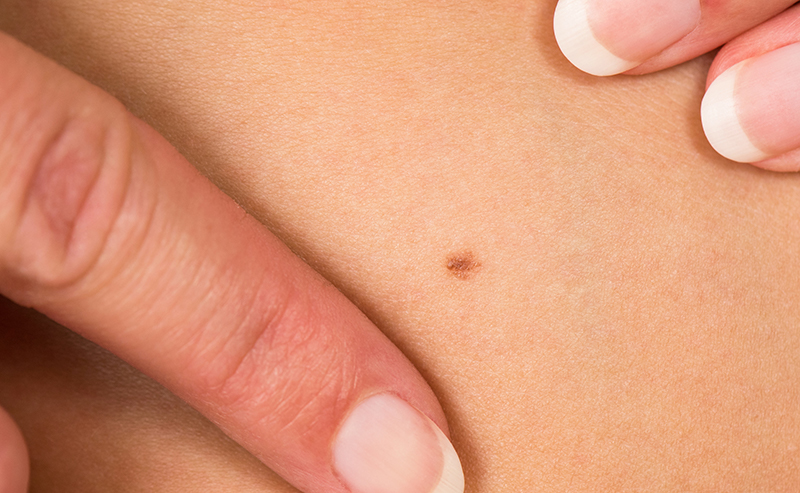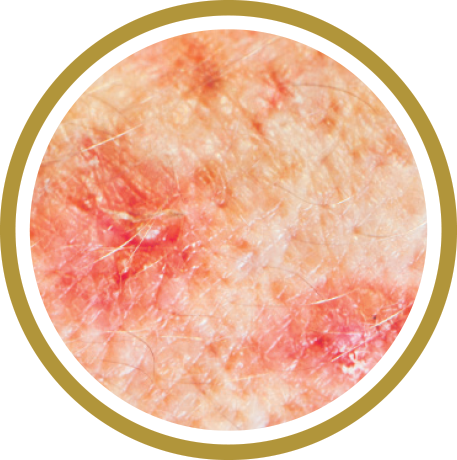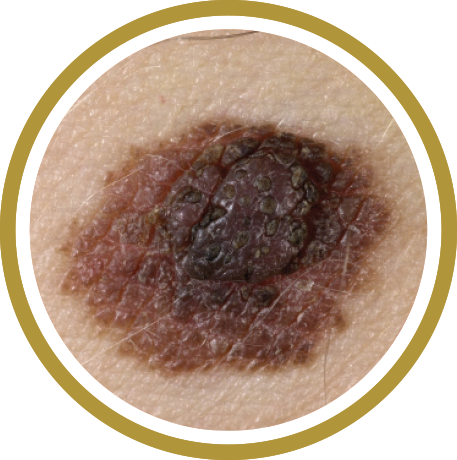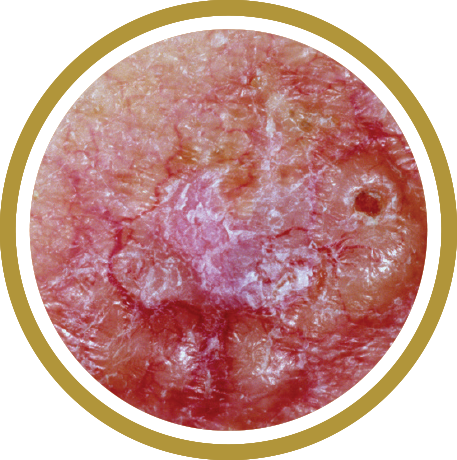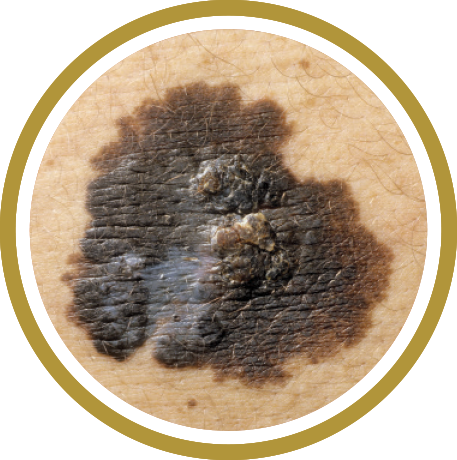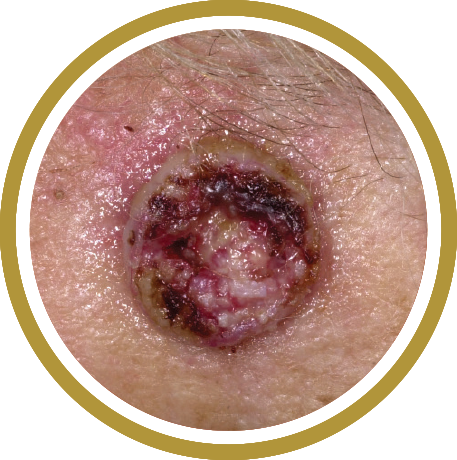Seborrheic Keratosis (SK)
Seborrheic keratoses (SKs) are common, non-cancerous lesions that grow on the outer layer of the skin (epidermis). Though they may appear to spread, SKs are not contagious.Appearance
SKs can develop on any part of the body.- Usually begins as rough, itchy bumps
- Can thicken and darken to brown or black over time
- Usually round- or oval-shaped with an elevated, rough surface
- Sometimes seems to be glued to the skin or dropped on like candle wax
SK or something else?
- Warts are caused by a virus. They are usually not as dark and do not appear to have been pasted on as SKs do.
- Actinic keratoses (AKs) represent a very early stage of skin cancer and develop on sun-exposed parts of the body. AKs are usually flatter, redder, and rougher than SKs.
- Moles (also known as nevi) can be similar in color but are more commonly developed during childhood. Most people develop 20-30 moles during their lifetime.
- Melanomas can sometimes be confused with SKs because they can both be dark in color and have irregular shapes.
Learn how to examine your skin
